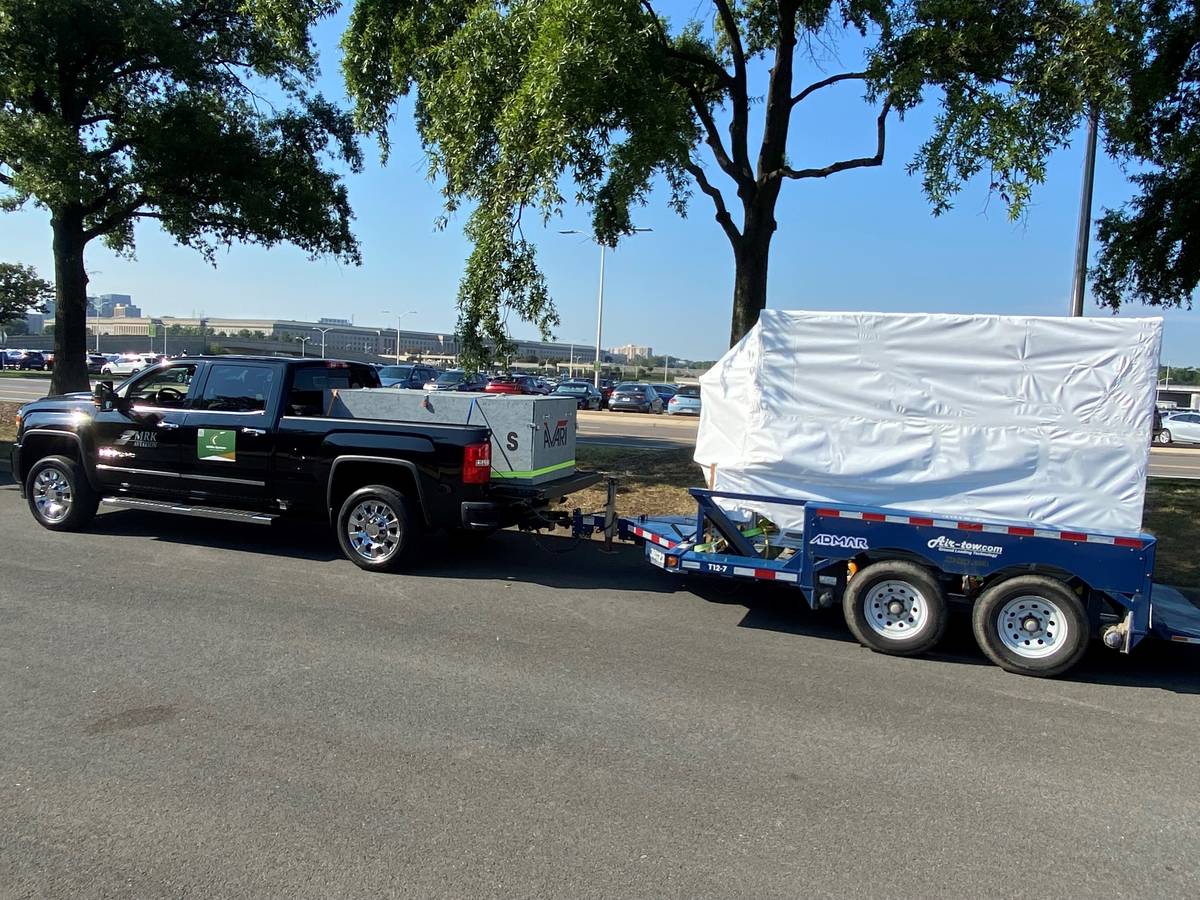Start-Ups
NOAA Helps Fund Innovation
NOAA Seed Funding Gives Small Startup a Boost
Left to right: Professor Mahesh Illindala (The Ohio State University), Graham Burris (Avari), Mason Bruns (The Ohio State University), Alec Romesberg (NEOEx), and Mark Haberbusch (NEOEx) pose with their autonomous aerial vehicle refueling station prototype at the 2022 Pentagon Energy Expo.
Credit: Mark HaberbuschFollowing your passion, listening to instinct, and being brave enough to take a risk: these are traits often associated with entrepreneurs and start-up culture. One such entrepreneur is Mark Haberbusch, who followed his inner compass and left his full-time Director of Research job with an aerospace company to pursue his engineering passion and start his own small business.
His passion?
To develop a liquid-hydrogen fuel technology that replaces traditional fuel and electric power supplies on aerial drones, potentially extending small drone mission duration by up to 20 times.
Haberbusch formed his company, NEOEx Systems, in 2015 and set up shop at a regional airport in Elyria, Ohio. He applied for federal seed funding to support the design and development of a revolutionary drone technology that would one day lead to a partnership with the U.S. Army. Haberbusch was awarded a NOAA Small Business Innovation and Research (SBIR) Phase I award, which provided the early-stage capital that he needed to transform his idea into an innovative technology. As a test case for this research phase, he developed a tool that supported hurricane monitoring for NOAA’s National Hurricane Center. NEOEx later received a Phase I SBIR award, this time from the U.S. Air Force, along with a follow-on Phase II STTR award to further develop the technology. More recently, NEOEx was awarded a significant contract with the U.S. Army to implement their innovative fuel technology for multiple aircraft, refueling stations, and cryogenic sensor payloads for radiation detection. Haberbusch noted, “None of this could have come together without that initial NOAA Phase I support.” Now that NEOEx has figured out how to get hydrogen fuel technology onto an aircraft, they are developing ways to replenish aircraft fuel autonomously in the field to extend missions even further.

At its Ohio production facility, NEOEx has designed a refueling station prototype that can be deployed at airports and other facilities to support extended drone or aircraft missions. Last year, Haberbusch and his team loaded the prototype onto a trailer and drove it to Washington, D.C., for the 2022 Pentagon Energy Expo. NEOEx’s technology can support ocean-based as well as airborne uncrewed systems. “The liquid-hydrogen fuel technology for powering fuel cells for unmanned aircraft systems is directly applicable to unmanned underwater vehicles,” Haberbusch noted. His early work in this area was recognized when he received an R&D100 Award in 2011 for developing several liquid-hydrogen and liquid-oxygen fuel cell power systems for uncrewed underwater vehicles for the Office of Naval Research. As the NEOEx team continues to develop refueling capabilities, they are also working with Federal Aviation Administration officials to accommodate liquid-hydrogen fueled aircraft in the national airspace. There are strict rules in place that determine what kind of aircraft and payloads are allowed in commercial airspace, and Haberbusch hopes that these ongoing efforts will lead to new commercial applications and increased government and military support for this kind of technology. What advice does Haberbusch have for other entrepreneurs who are thinking about founding their own company? “What helped me take the leap was to think about starting and running a new business like running a research project,” he said. “For example, it’s important to identify what the questions are and what you don’t know. In my case, I had to learn about accounting systems and figure out how to get liquid hydrogen onto a plane. I encourage other business owners to identify mentors and local support groups such as small business support centers and non-profits who help new manufacturers get off the ground. Document everything and have a plan. Spend time figuring out who your customers are. And finally, understand that you are not going to find all the answers right away, but if you stick with it, in time you figure it all out.”